Mesothelioma & Asbestos Worldwide
Global asbestos consumption remains at about 2 million metric tons per year despite the mineral’s connection to mesothelioma and other cancers. Countries that still use asbestos include Russia, China, Brazil and India. The primary uses are in building materials such as asbestos-cement sheets.

Is Asbestos Still Used Around the World?
While some countries have banned the use of asbestos, nations around the world still widely mine, trade and use the toxic mineral. Russia, China, India, Indonesia, Brazil and Kazakhstan are among the largest asbestos consumers globally.
The mineral’s affordability makes asbestos a popular choice for durable heat- and fire-resistant building materials worldwide. Asbestos-cement panels are still widely used, but they come with health costs. A 2023 study in the Annals of Global Health highlights the direct correlation between high asbestos use and rates of mesothelioma.
A 2023 analysis published in Nature showed global controls have impacted the production of asbestos-containing materials. However, global databases still don’t list many hazardous materials, including chrysotile asbestos. As a result, asbestos use has remained relatively constant over the past decade.
Learn about your diagnosis, top doctors and how to pay for treatment in our free mesothelioma guide.
Get Your GuideAustralia
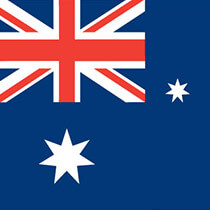
Australia was among the heaviest asbestos users until a national ban on the mineral took effect in 2003. Legacy exposure is still a concern for residents who live and work in buildings with asbestos-containing materials. Mesothelioma, which almost always means a shortened life expectancy, continues to affect thousands of Australians each year.
Wittenoom, Western Australia, was a particularly notable example of the asbestos boom in the country. The town grew around a blue asbestos mine, which closed in 1966 amid declining profits and increasing concerns about health risks. More than 2,000 of Wittenoom’s 20,000 former residents have died from asbestos-related diseases. Today, people continue to be exposed to harmful residue through illegal visits to the shuttered town.
Australia enacted a comprehensive ban on asbestos on December 31, 2003. It prohibits the import and export of the mineral and products containing it unless an exception has been granted. According to the Asbestos and Dust Diseases Research Institute, 4,000 deaths of Australians per year are attributed to asbestos exposure and 1 in 3 Australian houses contain asbestos building materials.
Brazil
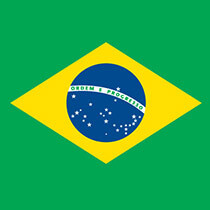
Brazil has historically been a major exporter of asbestos-containing materials. In November 2017, the Brazilian Supreme Court voted to ban the production, commercialization and use of asbestos in the country. However, some production continues.
According to the United Nations Comtrade Database, Brazil exported more than 190,000 metric tons of asbestos and asbestos products in 2023. That included 20,744,890 tons of asbestos cement valued at $5,661,382.
Canada

Canada banned the import, sale and use of asbestos in 2018. The Prohibition of Asbestos and Products Containing Asbestos Regulations also applies to manufacturing, importing, selling and using asbestos products. Notable exceptions include asbestos used in military equipment, chlor-alkali facilities, museum displays and road construction.
Canada’s last asbestos mines closed in 2012. However, the legacy of mining continues to impact former workers, their families and residents of mining towns. Additionally, many buildings still contain asbestos.
China

China is one of the biggest consumers of asbestos-containing materials in the world. China produced approximately 200,000 metric tons of asbestos in 2023. This is significantly less than its production 10 years ago but still places it as one of the largest producers of ACMs in the world.
The UN Comtrade Database lists China as the largest exporter of asbestos and ACMs, with an annual total of almost 311,500 metric tons in 2023. The trade value of these products reached nearly $200 million in the same year.
A 2024 study in the Journal of the National Cancer Center highlights the need for protections. Its authors predict that China will see a significant increase in the incidence of asbestos-related diseases, especially malignant mesothelioma. However, mesothelioma rates will likely peak much later than in many other industrialized nations because of the disease’s long latency period.
Colombia
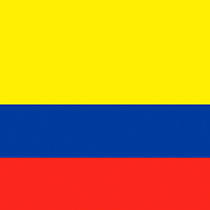
Asbestos saw widespread use in Columbia, mainly in cement products and brakes. Several large mines in the country produced large quantities of mostly chrysotile asbestos. A law passed in 2019 banned the use and production of these products effective January 2021.
According to a 2021 analysis of asbestos regulations in Latin America and the Caribbean, the 2021 Columbian law closely aligns with recommendations from the World Health Organization and the International Labor Organization.
A study of the town of Sibaté, Colombia, which housed an asbestos cement factory, revealed an unusually high rate of malignant mesothelioma among residents. This highlights the ongoing issues of asbestos-related diseases even after bans take effect.
Kazakhstan
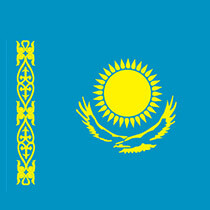
Kazakhstan is the second largest exporter of asbestos and asbestos-containing products in the world. According to the World Integrated Trade Solution, Kazakhstan exported 269,637 metric tons of asbestos in 2023. The U.S. dollar trade value of those materials is estimated at $82,977,737.
Its high level of production and use of asbestos has serious health consequences. A 2022 study in BMC Public Health examining the rates of asbestos-related diseases in countries with high asbestos production noted “Kazakhstan had the highest ASMR [age-standardized mortality rates] and ASDR [age-standardized disability-adjusted life year rates] of disease attributable to asbestos in both men and women” during the study period.
India
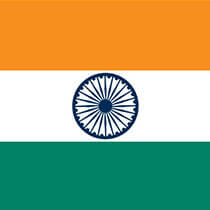
India banned the mining of asbestos in 2011. However, the country allows the use and importation of the material. Widespread asbestos use in India continues despite bans there and in many other countries. Al Jazeera reports India is the world’s largest importer of asbestos products.
Asbestos is commonly used in asbestos-cement pipes, roofing for households and brake linings in India. The toxic effects of exposure are far-reaching. Research indicates this high dependency on the mineral will lead to the need for palliative care for asbestos-related illnesses for 6 million Indians over the next several decades.
Poland

Poland banned the production and use of asbestos in 1997. However, the UN Comtrade Database shows the nation still exported $25,603,423 worth of asbestos and ACMs in 2023.
Additionally, the widespread use of asbestos in building materials installed before the ban leaves many buildings with high levels of the mineral. According to a 2023 study in Cleaner Waste Systems, there are still millions of tons of asbestos-containing materials within Poland.
Russia

Russia is a leader among countries that still use asbestos. The Observatory of Economic Complexity reports that the nation exported $232 million in asbestos in 2022, making it the world’s largest asbestos exporter. Countries purchasing Russian asbestos include India, China, Indonesia, Uzbekistan and Thailand.
In addition to being the largest producer of asbestos and asbestos products, Russia is also a major importer of asbestos brake pads. At least 16 trading partners reported exporting brake linings and pads to Russia in 2023.
Continued use of asbestos within Russia has serious health consequences. A 2022 study in BMC Public Health shows the nation has one of the highest disease burdens attributed to asbestos. Additionally, a 2024 study of workers at Russia’s Asbest mine showed an association between high asbestos fiber exposure and an increased risk of mesothelioma and increased mortality from lung cancer among men with high dust exposure.
South Africa
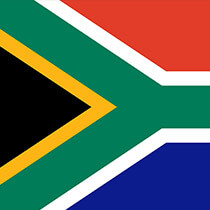
South African asbestos mining officially ended in 2008. Regulations passed in March of that year prohibited the use, manufacture and processing of asbestos in the country. Before that, South Africa was a major producer of asbestos products, including insulation, pipe linings, fire blankets and brake pads and linings.
South Africa passed the Asbestos Abatement Regulations in November 2020. This expands on prohibitions for using asbestos and ACMs, increases awareness of mesothelioma and other dangers of exposure and provides a framework for ensuring safety around legacy products. Because asbestos-related diseases take years to develop, there are still high rates of mesothelioma in the country.
United Kingdom
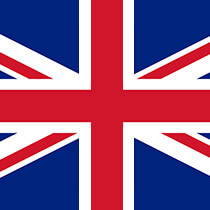
The U.K. banned the importation of blue and brown asbestos in 1985. It expanded the ban to cover white asbestos in 1999. However, even today, many asbestos-containing products are still in use and circulation in the country. The Observatory of Economic Complexity reports growth in U.K. imports (11.8%) and exports (62.1%) of asbestos cement articles between May 2023 and May 2024.
Before bans took place, asbestos was widely used in the U.K. for insulation, brakes, floor tiles, roofing and fireproofing for buildings and ships. People can come in contact with the toxic mineral through handling these products during renovations, repairs and construction or as the materials degrade with age.
Zimbabwe

Zimbabwe has a long history of asbestos mining. Today, it has the largest chrysotile asbestos reserves in Africa at the Zvishavane Ultramafic Complex. Some of the country’s largest mines have closed. However, production restarted at the former King Mine in Mashava, Zimbabwe, in 2019. Operators expect to produce 75,000 tons of asbestos per year from the mine.
Zimbabwe exported 26,040 kg of asbestos cement sheet panels in 2023 and imported 30,956 kg of asbestos-fabricated products. Legacy use also contributes to exposure. Many buildings in Zimbabwe contain asbestos materials, which pose health risks for construction workers. The Hazardous Substances and Articles Act establishes requirements to reduce exposure risks.

“After reading the guide, I felt more confident about what was ahead.” – Carla F., mesothelioma survivor
Get Your Free GuideAsbestos Mining Continues Around the World
Despite its established connection to serious health conditions, many countries continue to mine asbestos. The U.S. Geological Survey’s National Minerals Information Center estimates countries mined approximately 1.3 million tons of asbestos in 2023. This amount is only slightly lower than in 2022 and relatively stable since 2015.
Brazil, China, Kazakhstan and Russia are currently the largest producers of mined asbestos in the world. Additionally, Kazakhstan and Zimbabwe have substantial reserves of the mineral.
An estimated 1.3 million metric tons of asbestos was mined in 2023. Russia mined approximately 630,000 million metric tons, with Kazakhstan mining 260,000 metric tons.
Global Efforts to Ban Asbestos
More than 60 countries around the world have banned asbestos use. Many mine operators have tried to get around these bans. In February 2023, the Brazil Supreme Court upheld the nation’s asbestos ban and ordered mining operations to stop immediately.
Organizations Advocating for Asbestos Bans
- Asbestos Disease Awareness Organization
- Collegium Ramazzini
- International Agency for Research on Cancer
- International Ban Asbestos Secretariat
- International Labor Organization
- United Nations Environment Programme
- World Health Organization
The European Union banned asbestos use in 2005. The European Parliament and Council of the European Union signed legislation in November 2023 to improve occupational safety for workers exposed to asbestos. The U.S. Environmental Protection Agency passed a final rule in March 2024 banning the final uses of asbestos allowed in the country. This puts the U.S. closer in line with other bans in developed nations.
Rotterdam Convention
The Rotterdam Convention is a multilateral agreement the United Nations Environment Programme and the Food and Agricultural Organization of the United Nations oversee. It aims to promote information sharing and informed consent about the use of toxic chemicals and pesticides among more than 170 member nations.
Annex III of the Rotterdam Convention lists 5 of the 6 types of asbestos as hazardous chemicals. Efforts to add chrysotile asbestos to the Convention’s list of hazardous materials have been underway since 2006. These have not been successful as a result of opposition from several member states that still widely produce and use asbestos and ACMs.
Global Efforts to Reduce Mesothelioma, Lung Cancer and Other Asbestos-Related Diseases
As a result of the World Health Assembly’s resolution 60.26, the World Health Organization leads a global campaign to end asbestos-related diseases. Its efforts largely target countries still using chrysotile asbestos.
The WHO strongly recommends a global ban on the production, trade and use of asbestos to improve health outcomes. In the absence of such a ban, individual countries are responsible for establishing policies to ensure safety. Many countries have asbestos bans in place, but many others continue to use and produce the mineral. This poses serious health risks from asbestos-related diseases such as mesothelioma.
Asbestos continues to pose a significant health risk around the world. Many countries don’t prioritize or can’t afford asbestos removal from older buildings that house millions of residents. Until we solve this problem, hundreds of thousands of people will continue to die each year from asbestos-related lung cancer and mesothelioma.
A 2024 study on the disease burden of asbestos showed 239,330 deaths and 4,189,000 disability-adjusted life years in 2019 directly related to asbestos exposure. The same study predicts continued increases in disease burden from occupational exposure because of the long latency period of asbestos-related diseases.
This burden is slowly shifting from high socio-demographic areas to lower ones. Residents of many of these areas, such as Jharkhand, India, and Limpopo, South Africa, financially benefited from mining operations but now face tremendous health problems. Interestingly, WHO research indicates that banning asbestos has no negative economic impact, which may sway producing nations to adopt stricter policies.
Legal Costs
Legal costs compound the significant health costs of asbestos exposure. This includes compensating victims’ families for unnecessary illness and death. WHO estimates place the cost of healthcare for asbestos-related illnesses at $2.4-3.9 billion. This doesn’t include the costs of pain and lost wages. It further estimates litigation in the U.S. to cost an additional $2.3 billion per year.
There is ongoing evidence that mismanagement of asbestos is resulting in elevated healthcare expenses that surpass any benefits. Over the lifetime of all patients with an asbestos-related disease, burden of disease costs has been estimated to be $11 billion.
Economic losses in countries still using asbestos extend beyond healthcare and legal costs. Lost productivity is another concern. The Center for International Economics estimated the 2015-16 cost of lost productivity because of asbestos-related diseases at $321 million.
Common Questions About Worldwide Asbestos Use
- What is mesothelioma and how is it related to asbestos exposure?
-
Mesothelioma is a type of cancer that forms in the lining tissue of organs. Its primary cause is asbestos exposure. The most common form of mesothelioma affects the pleura, or lung lining. The disease may also affect the heart, abdomen or testicles.
- Which countries have the highest rates of mesothelioma?
-
A 2023 study examining global rates of mesothelioma showed that Luxembourg, the U.K., Australia, The Netherlands, New Zealand and Belgium had the highest rates of mesothelioma in 2020. Northern European countries appear to have the highest incidence of mesothelioma, particularly in men.
- Why do some countries still use asbestos despite its known health risks?
-
Every country has its reasons for continuing to use asbestos despite its risks. Many of these reasons are economic. Commercial interests, such as asbestos mining and manufacturing companies, often have significant influence over policy.
Additionally, asbestos is an inexpensive insulation and fireproofing material. This makes it attractive to developing nations looking to improve infrastructure and add housing.
- How long after asbestos exposure can mesothelioma develop?
-
Mesothelioma often takes decades to develop. The median latency period between exposure and disease diagnosis is 40 years, with a range of 20 to 60 years depending on the person’s age and the length and level of exposure. This long latency means many cases can still develop years after a nation institutes a ban.




